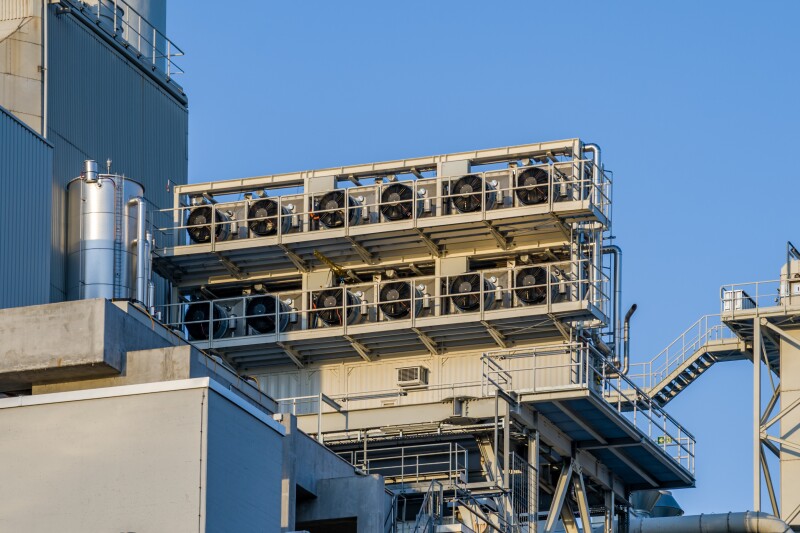ExxonMobil announced this week that it wants to build at least 20 new carbon-capture-and-sequestration (CCS) facilities in a plan that includes investing $3 billion in low-emissions technologies by 2025.
To spearhead the effort, the Irving, Texas-based oil company has formed a new business called ExxonMobil Low Carbon Solutions. The move means that ExxonMobil’s existing carbon-capture programs will benefit from added staff and planning resources.
Upon sharing the news, the company said it has been working for years to develop new process technologies that can lower the cost of capturing and storing CO2. Meanwhile, momentum has been steadily building in terms of support for CCS from governments and investors around the world.
“We’ve recognized that carbon capture and storage is a critical element to achieving the ambitions in the Paris Agreement” and that “given where things have evolved to, now is the time to bring a more concerted effort in this space,” said Darren Woods, chairman and CEO of ExxonMobil, on a Tuesday quarterly call with investors.
One of the places that the new low-carbon unit is looking to make its presence known is in the US Gulf coast where multiple projects are under consideration.
ExxonMobil said the potential exists to collect millions of metric tons (Mt) of CO2 from industrial plants that dot the coastal region which can then be stored in formations accessible from both onshore and offshore fields. Similar projects and partnerships are being considered in Europe and across Asia.
ExxonMobil noted in its announcement that it has been in the carbon-capture business for more than 30 years and currently collects around 9 million metric tons of CO2 per year. The oil company owns equity in about 20% of global CCS capacity, representing facilities that account for nearly 40% of the world’s captured manmade emissions, according to ExxonMobil.
“If you look at the different elements that have to go in to successfully building a CCS business, it is very consistent with what we do today and very much in our wheelhouse,” Woods said, pointing to ExxonMobil’s vast array of pipelines, downstream capabilities, and its wealth of subsurface knowledge.
More than once though, the CEO described CCS as “a very complicated” sector, not least of which because of its dependence on regulatory frameworks to allow for a sustainable business.
Historically, that has contributed to the biggest problem with CCS, which is its inability to generate profits. This is changing, though, thanks to new tax incentives and the advent of carbon credits, which ExxonMobil expects to be selling to others as its efforts ramp up.
Commenting on the new administration of US President Joe Biden, Woods said the White House is “interested in progressing in this space and we’re there and ready to talk with them and provide some perspective from an industry standpoint.”
As part of the rollout, two new partnerships were shared. ExxonMobil said it is working with a carbonate fuel cell developer called FuelCell Energy and a direct-air-capture firm called Global Thermostat.
ExxonMobil also announced plans to increase its production of hydrogen, which has some synergies with CCS operations. The oil company produced about 1.3 Mt of clean-burning hydrogen last year, according to company reports.
All of this follows ExxonMobil’s announcement in December that it was taking new measures to reduce its overall emissions profile. The broad plan calls for a reduction in methane emissions and flaring by up to 50% and an overall reduction of greenhouse-gas emissions of 30% by 2025.
This month, the company said it has achieved a 6% net reduction in greenhouse-gas emissions since 2016—the year the Paris Agreement was signed by most of the world’s countries.
ExxonMobil's Potential Carbon-Capture-and-Sequestration Projects and Partnerships
- Wyoming, US—ExxonMobil is seeking to expand its La Barge CCS facilities to allow for an addition 1 million Mt of CO2 to be captured annually, bringing total site capacity up to 8 million Mt per year. The La Barge facility is currently the largest industrial capture site in the world.
- Netherlands—ExxonMobil has entered into a joint-development project involving the Port of Rotterdam CO2 Transportation Hub and Offshore Storage project, known as Porthos. The project is trying to collect carbon emissions from industrial sites and use a pipeline to store them in depleted North Sea gas fields offshore.
- Belgium—ExxonMobil is one of several partners in a CCS project at the Port of Antwerp, which is Europe’s largest integrated energy and chemicals cluster. The project plans to store industrial sources of CO2 and is seeking support from the European Union.
- Scotland—In another joint venture, ExxonMobil is seeking to help realize the Acorn project, which will collect CO2 from a gas-processing complex for storage in offshore gas reservoirs.
- Singapore—ExxonMobil is planning a CCS hub concept to serve the Asia-Pacific region. The project will focus first on capturing emissions from Singapore manufacturing facilities for storage in the region.
- Qatar—ExxonMobil and Qatar Petroleum are existing partners in a CCS project with an annual capacity of 2.1 million Mt. ExxonMobil is considering adding capacity in the region.


